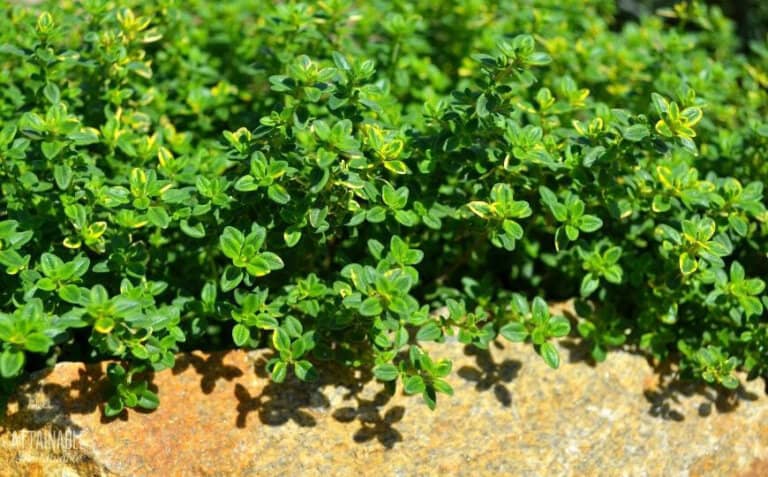

Once placed into the soil, water generously and keep the soil damp at all times. Make sure to strip off any leaves that will be submerged in the soil. When taking cuttings, pick healthy, non-flowering shoots and cut just below a leaf node using a sharp knife. The most common way to propagate thyme is through stem cuttings or layering. Finally, make sure you keep the soil moist but not waterlogged or soggy as this can stunt growth and cause disease.Yes, propagating thyme is relatively easy. Additionally, thin out any overcrowded clumps every year or two to keep your plants healthy and vigorous. This will help to encourage the thyme to spread naturally as it grows. For best results, plant thyme in a clump with several plants close together, rather than spreading them far apart. Once you have prepped the area, you can sow your thyme seeds or transplant them from another part of your garden. Remove any weeds from the area and shape the ground as necessary.

Start by finding a spot in your garden that gets at lest four hours of sunlight per day, and make sure the soil is well-drained. To encourage thyme to spread, it is important to create the right environment for it. Water regularly and prune any dead or overgrown stems as needed. The best way to ensure that your thyme comes back every year is to plant it in well-draining soil and give it plenty of sunshine. In some areas it may die back in the winter and reappear in the spring, while in more temperate regions it will stay green throughout the year. It is a low-growing evergreen shrub that can survive Iowa winters and grows in many climates. Yes, thyme is a perennial herb, meaning it will come back every year. See also Solving the Mystery of Agapanthus Not Flowering You should also make sure to water the plant regularly and keep it in a sunny spot to ensure optimal growth. After trimming your thyme, it can take up to a month for the plant to start regrowing. This is why it’s important to trim it back regularly, as this encourages new growth. For these reasons, many gardeners opt to purchase pre-grown thyme plants or take cuttings from friends or neighbors instead of trying to grow the herb from seed. Additionally, thyme requires a minimum soil temperature of 60 degrees Fahrenheit and plenty of sunlight, making it tricky to grow in colder climates or shadier gardens.
#PROPAGATING THYME IN WATER FULL#
This can be frustrating for gardeners who are trying to get a full crop at once. Its germination can be uneven, with some seeds coming up quickly while others take much longer to sprout. Thyme is a slow-growing herb, making it difficult to grow from seed.
#PROPAGATING THYME IN WATER HOW TO#
See also Gardening on a Budget: How to Get Cheap Seeds for Your Garden! The Difficulty of Growing Thyme Replant the divisions in fresh soil and water well to ensure successful establishment. In early spring or late fall, carefully dig up the plant and divide it into several sections using a sharp knife or spade. Thyme plants tend to become woody over time, so regular division will help keep them healthy and productive. Another propagation method for thyme is dividing established plants. Roots should form within a couple of weeks, ater which the cutting can be transplanted into soil. Cover with plastic wrap or a clear container to increase humidity, and keep in bright light but out of direct sunlight. After taking the cutting, strip off the lower leaves and place the stem in a moistened medium such as perlite or vermiculite. Cuttings should be taken from actively growing stems and include at least two sets of leaves. The most common method is by taking cuttings from existing plants. Thyme is fairly easy to propagate, and can be done in a few different ways. See also Gardening Fans: Grow the Perfect Lavender Tree! With proper care, your thyme cutting should become an established plant within several months. Water it regularly and keep it in an area that gets plenty of sunlight for best growth. Once the roots have formed, you can transplant your thyme cutting into its permanent home in well-drained soil.

Then wait for roots to form, which can take aywhere from two to eight weeks. Keep the pot in a warm, shaded area and keep it slightly damp. Remove the lower leaves and then dip the cut end in a rooting hormone before placing it into a container of moist soil mix, vermiculite or perlite. To propagate thyme, start by taking a cutting from the stem at a node or point where the leaves attach. So if you’re looking for an easy way to get more thyme in your life then give propagation of thyme from cuttings a try! With just a few simple steps you’ll be well on your way towards enjoying fresh homegrown herbs anytime you need them! Propagating Thyme See also The Secret to a Thriving Calathea: Mastering Humidity Levels!


 0 kommentar(er)
0 kommentar(er)
